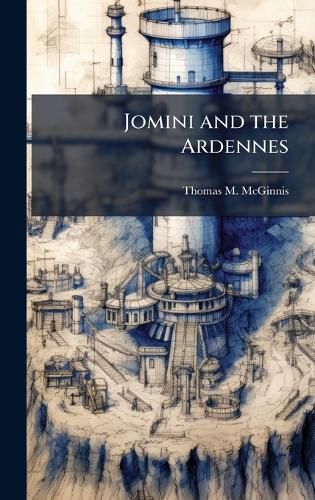Readings Newsletter
Become a Readings Member to make your shopping experience even easier.
Sign in or sign up for free!
You’re not far away from qualifying for FREE standard shipping within Australia
You’ve qualified for FREE standard shipping within Australia
The cart is loading…






This paper examines the applicability of the theories of the 19th Century military theorist, Baron Antoine Henri Jomini, to modern 20th century mid- to high intensity conflict. To do this it briefly reviews the core of Jomini's most famous work, The Art of War. It then tests two key Jominian concepts, lines of operation and decisive points, against the reality of a major 20th century operation, the German counteroffensive in the Ardennes in December 1944. The study first sets the strategic and operational setting then traces the general conduct of the operation from the corps and army perspective. The first phase studied is the German offensive and American defensive from 16 December to 26 December 1944. The second is the American offensive and German defensive from 22 December 1944 to 28 January 1945. In the theoretical analysis of these two phases, the paper examines the applicability of lines of operation and decisive points for planning and conduct of major offensive and defensive operations. It concludes that both armies and their commanders applied these two concepts throughout the planning and conduct of their operations. Such extensive application indicates that these two Jominian concepts still have utility for the modern operational commander.
This work has been selected by scholars as being culturally important, and is part of the knowledge base of civilization as we know it. This work was reproduced from the original artifact, and remains as true to the original work as possible. Therefore, you will see the original copyright references, library stamps (as most of these works have been housed in our most important libraries around the world), and other notations in the work.
This work is in the public domain in the United States of America, and possibly other nations. Within the United States, you may freely copy and distribute this work, as no entity (individual or corporate) has a copyright on the body of the work.
As a reproduction of a historical artifact, this work may contain missing or blurred pages, poor pictures, errant marks, etc. Scholars believe, and we concur, that this work is important enough to be preserved, reproduced, and made generally available to the public. We appreciate your support of the preservation process, and thank you for being an important part of keeping this knowledge alive and relevant.
$9.00 standard shipping within Australia
FREE standard shipping within Australia for orders over $100.00
Express & International shipping calculated at checkout
This paper examines the applicability of the theories of the 19th Century military theorist, Baron Antoine Henri Jomini, to modern 20th century mid- to high intensity conflict. To do this it briefly reviews the core of Jomini's most famous work, The Art of War. It then tests two key Jominian concepts, lines of operation and decisive points, against the reality of a major 20th century operation, the German counteroffensive in the Ardennes in December 1944. The study first sets the strategic and operational setting then traces the general conduct of the operation from the corps and army perspective. The first phase studied is the German offensive and American defensive from 16 December to 26 December 1944. The second is the American offensive and German defensive from 22 December 1944 to 28 January 1945. In the theoretical analysis of these two phases, the paper examines the applicability of lines of operation and decisive points for planning and conduct of major offensive and defensive operations. It concludes that both armies and their commanders applied these two concepts throughout the planning and conduct of their operations. Such extensive application indicates that these two Jominian concepts still have utility for the modern operational commander.
This work has been selected by scholars as being culturally important, and is part of the knowledge base of civilization as we know it. This work was reproduced from the original artifact, and remains as true to the original work as possible. Therefore, you will see the original copyright references, library stamps (as most of these works have been housed in our most important libraries around the world), and other notations in the work.
This work is in the public domain in the United States of America, and possibly other nations. Within the United States, you may freely copy and distribute this work, as no entity (individual or corporate) has a copyright on the body of the work.
As a reproduction of a historical artifact, this work may contain missing or blurred pages, poor pictures, errant marks, etc. Scholars believe, and we concur, that this work is important enough to be preserved, reproduced, and made generally available to the public. We appreciate your support of the preservation process, and thank you for being an important part of keeping this knowledge alive and relevant.